Author Archives: Josh
Western Kingbird
Stilt Sandpiper
Dunlin
White-rumped Sandpiper
Ruddy Turnstone
Turning Stones and Turning Heads – The Ruddy Turnstone is in Town!
If you’ve ever watched a successful baseball team, you’d see that there’s a different hero each night. The teams with just one or two all-stars never go as far as the ones where someone different is always stepping up. Yesterday that person was Randy with the report of phalaropes and Stilt Sandpipers. Today it was Steve. Steve stopped by Carlson’s Dairy over his lunch hour to see what was happening. Since he has an hour to eat lunch, unlike those of us who have 20 minutes to inhale our food AND get our daily dose of adult conversation, he often goes birding during that time. Steve will usually email me his report when he gets back to the office after 1:00. I very much look forward to this local intel as it often helps me determine on any given day if I should head into town to go birding or not, depending on what he finds.
I was at school for my last teacher day, busy wrapping up another year when my phone rang at 12:57. It was Steve. Whoa, a call and not an email. It had to be something big. Steve dropped a bomb when he said he found a Ruddy Turnstone at Carlson’s Dairy! Then he casually mentioned that he found four American Avocets! Unbelievable. I had two hours to fret before I was free to hit the highway.
3:00 finally came, and I zipped into Willmar where I transferred Marin over to Melissa and then picked Evan up at school. Evan and I got out to the field we had just visited not even 24 hours earlier. It didn’t take long to find what we were after.
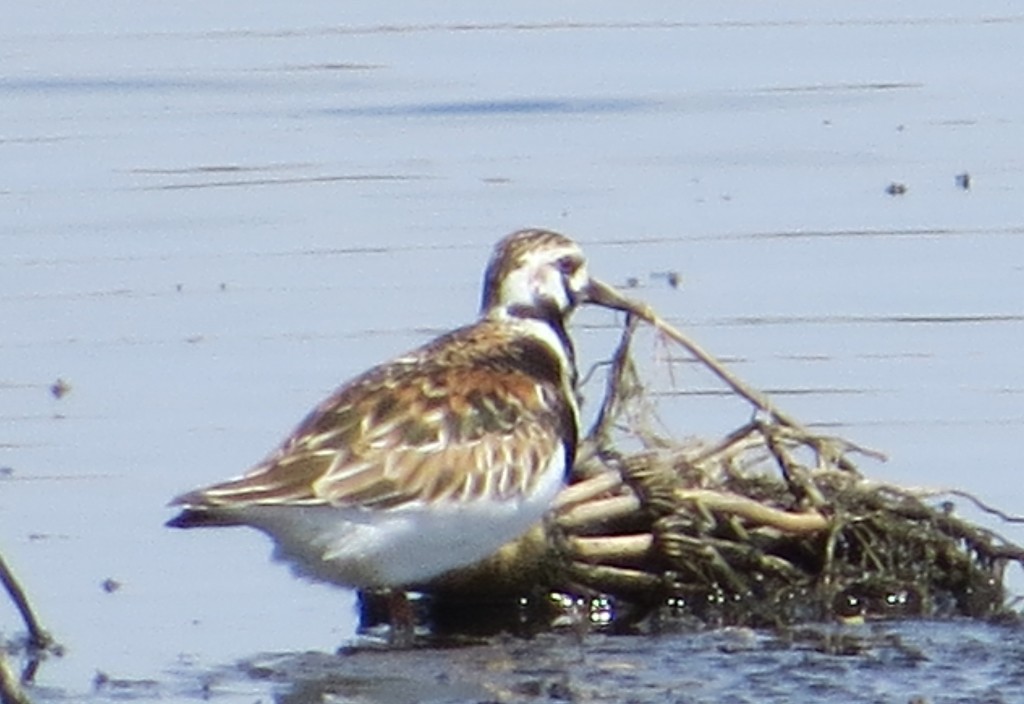
Ruddy Turnstone
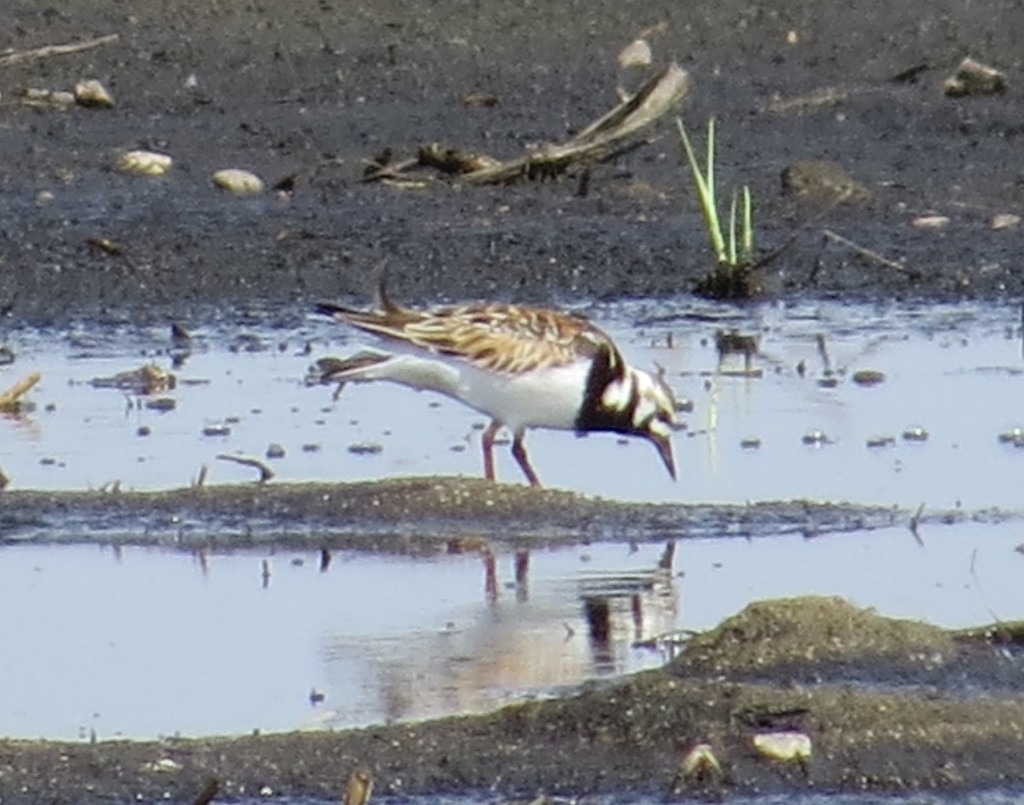
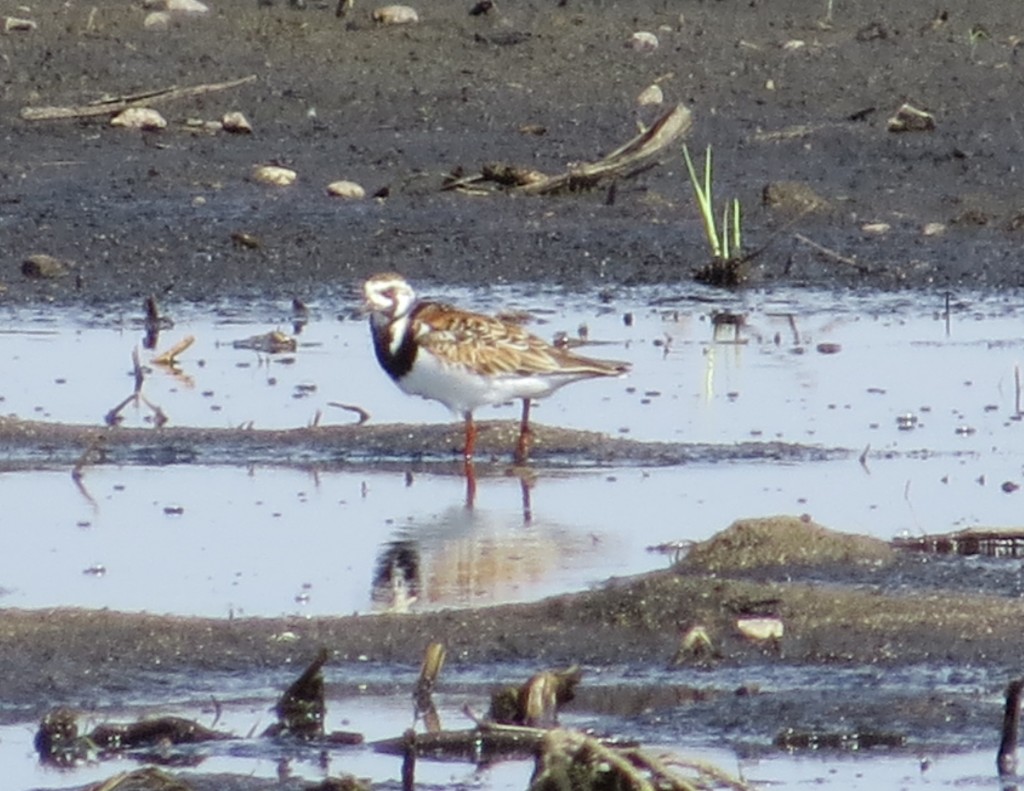
When we arrived I never saw the avocets. I figured they must have left. I saw some Canada Geese resting on the far shore, but there was not an avocet with them. Then, magically, one appeared. Evan was excited to see this second avocet of his life. The Ruddy Turnstone didn’t really trip his trigger, but these avocets seem to get his attention and rightly so. Before long all four American Avocets that Steve reported had materialized.
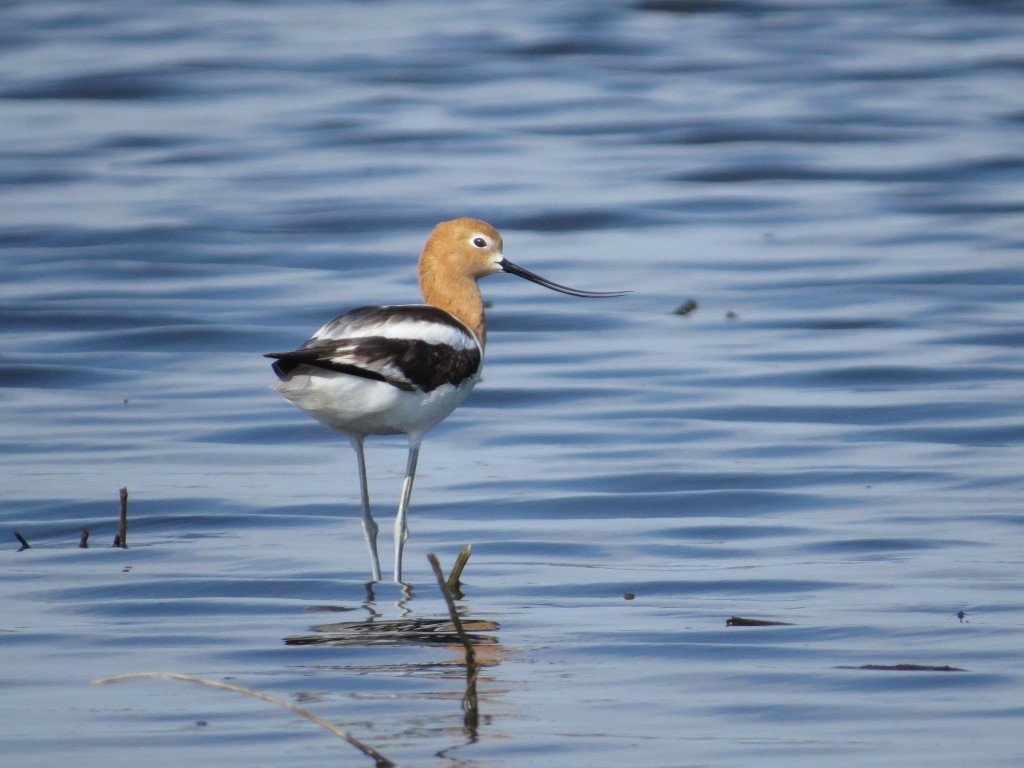
American Avocet
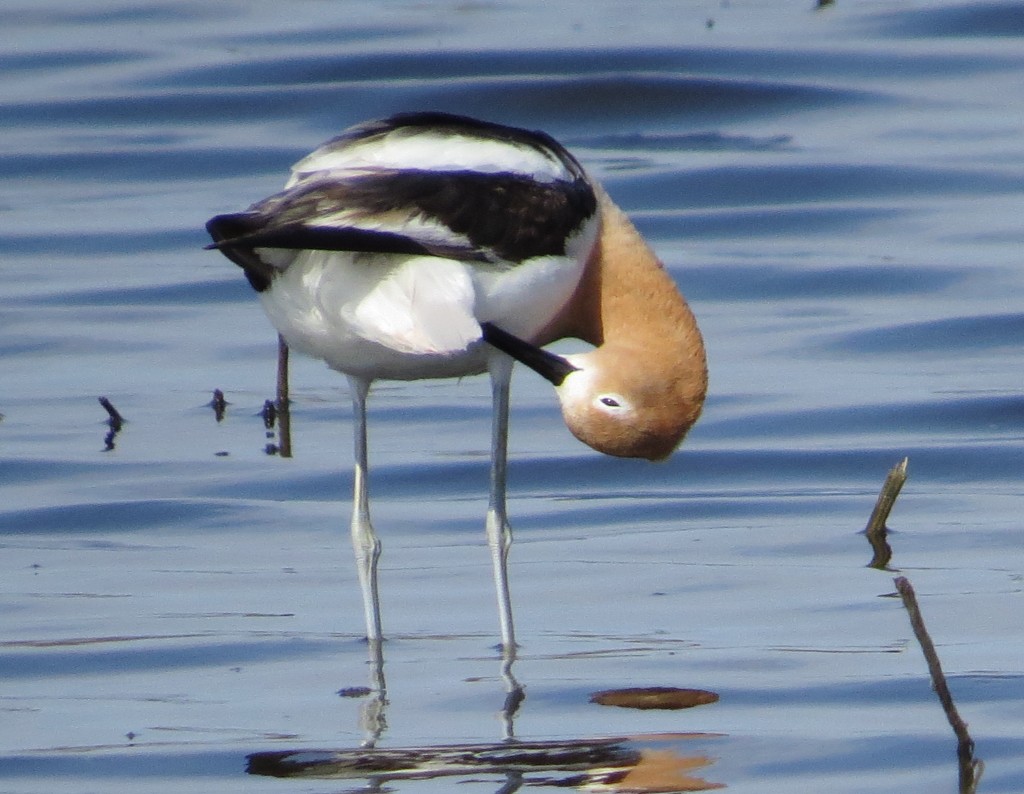
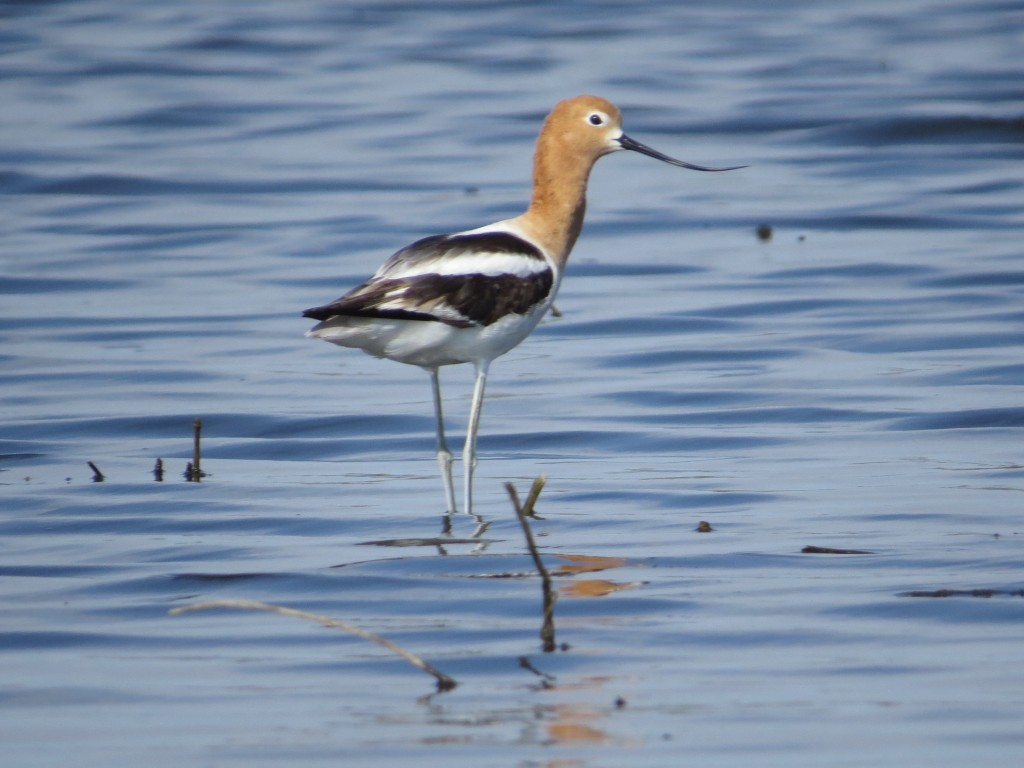
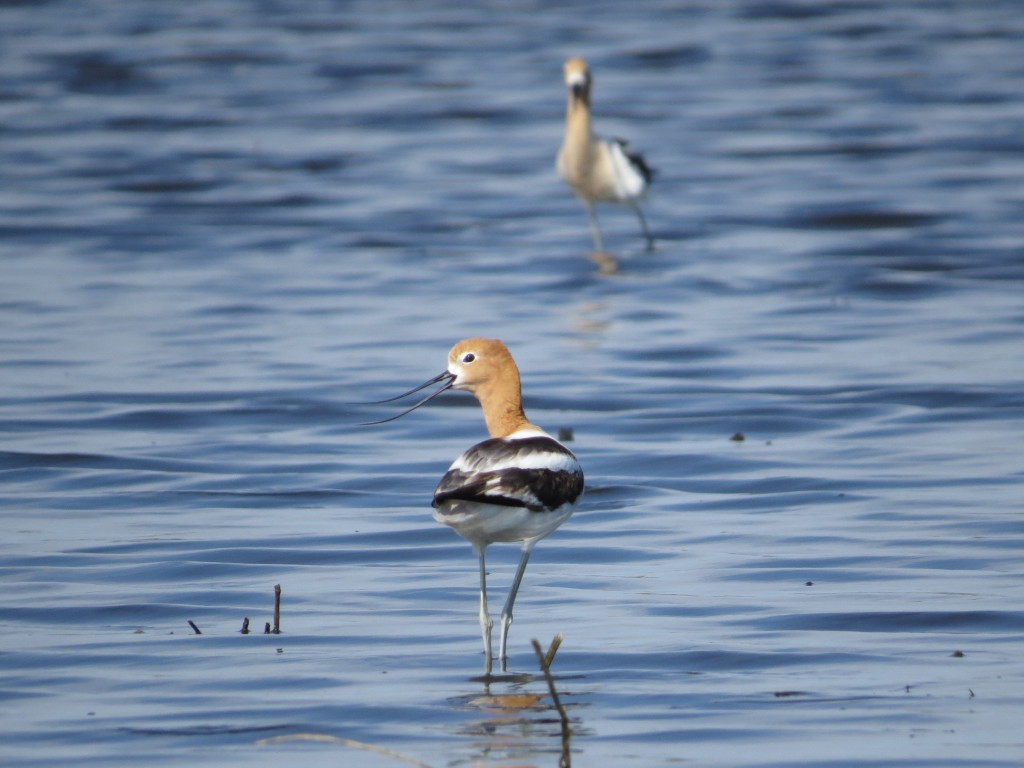 I continued to check out birds and photograph them while Evan played in the field.
I continued to check out birds and photograph them while Evan played in the field.
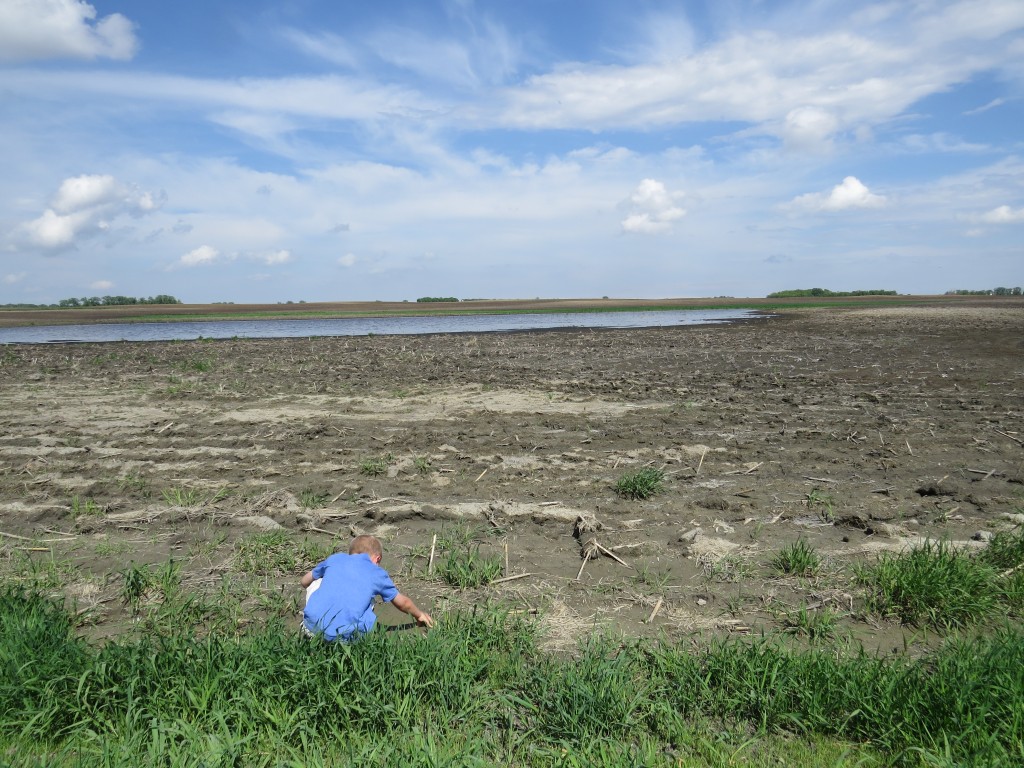 It’s a good thing that Randy showed up to break up the monotony by joking around with Evan and letting him look through his scope at all the cool shorebirds.
It’s a good thing that Randy showed up to break up the monotony by joking around with Evan and letting him look through his scope at all the cool shorebirds.
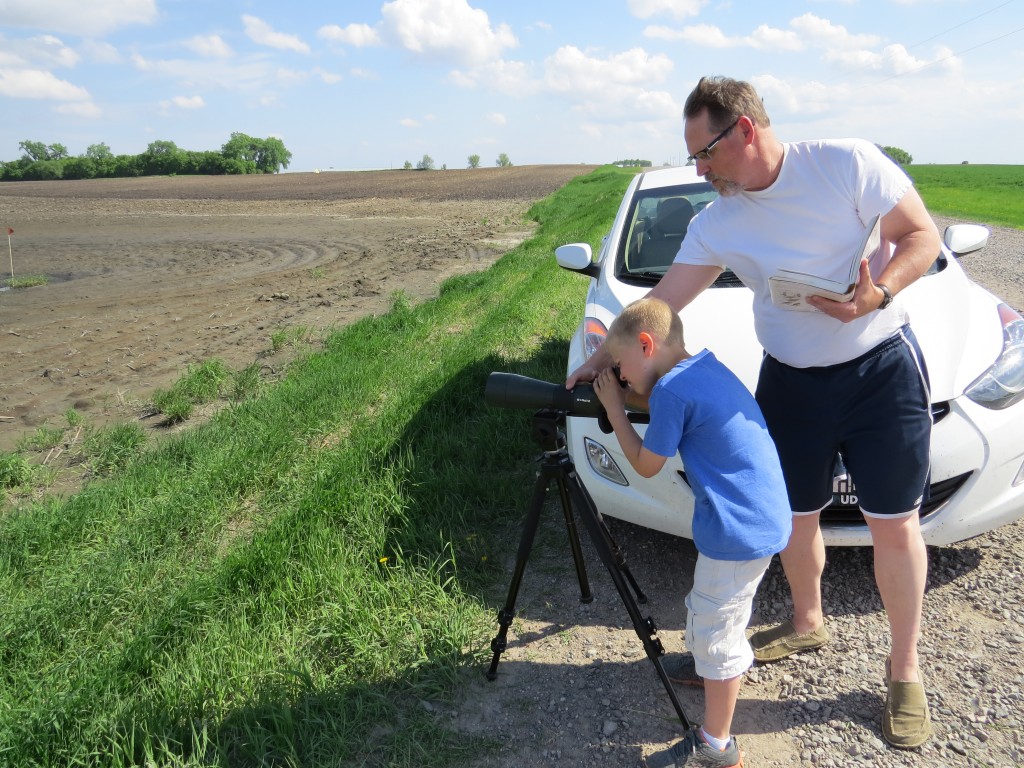 I was glad to have Randy there too. We had seen Dunlin and Wilson’s Phalaropes in addition to the Ruddy Turnstone and American Avocets, but we didn’t even try to sort through the peeps. Randy’s been to battle with shorebirds for many years, so he was undaunted by the challenge. Within seconds he was calling out Least Sandpipers, Baird’s Sandpipers, and White-rumped Sandpipers. White-rumped was one we needed, so I told him to find us one. He would oblige and let us look through the scope to get our looks at this lifer. Then I’d try to relocate the one he’d found in order to photograph it. The way these things move around and how many different species there were, I think it would have been easier to win the shell game against a hustler. I gave up on photographing this bird that varies only slightly from a Baird’s Sandpiper. I decided to cheat instead by photographing a whole flock of peeps and looking at my pictures later. See the ones with the clear white rumps? Those are White-rumpeds.
I was glad to have Randy there too. We had seen Dunlin and Wilson’s Phalaropes in addition to the Ruddy Turnstone and American Avocets, but we didn’t even try to sort through the peeps. Randy’s been to battle with shorebirds for many years, so he was undaunted by the challenge. Within seconds he was calling out Least Sandpipers, Baird’s Sandpipers, and White-rumped Sandpipers. White-rumped was one we needed, so I told him to find us one. He would oblige and let us look through the scope to get our looks at this lifer. Then I’d try to relocate the one he’d found in order to photograph it. The way these things move around and how many different species there were, I think it would have been easier to win the shell game against a hustler. I gave up on photographing this bird that varies only slightly from a Baird’s Sandpiper. I decided to cheat instead by photographing a whole flock of peeps and looking at my pictures later. See the ones with the clear white rumps? Those are White-rumpeds.
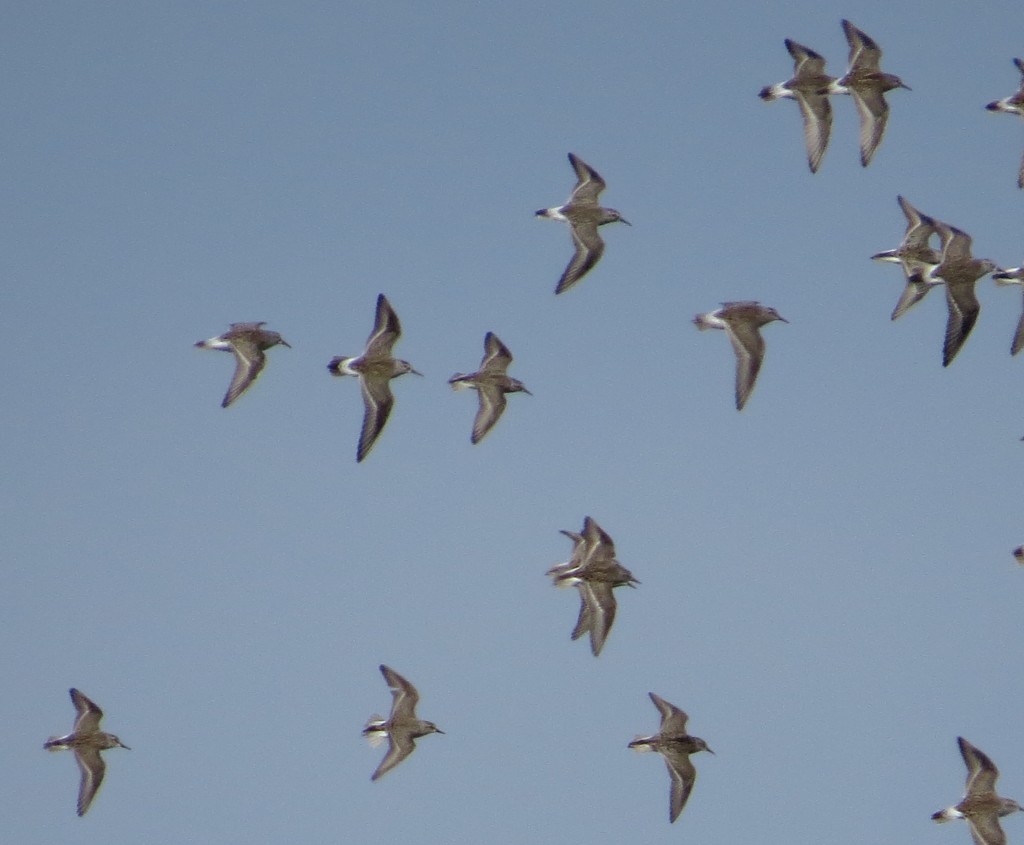
White-rumped Sandpipers et al
It was sad, really, that I spent a great deal of time trying to ID and photograph such a boring shorebird. I even missed it when Randy was observing the Ruddy Turnstone living up to its namesake by literally turning over stones with its bill to look for a meal. Randy also taught us that little tidbit of knowledge.
Even though I was frustrated with the White-rumped Sandpipers, Evan was having a good time getting into this scope thing. He even tried to turn a Killdeer into a Semipalmated Plover. Check out the bird book in his hand opened right up to the plovers section.
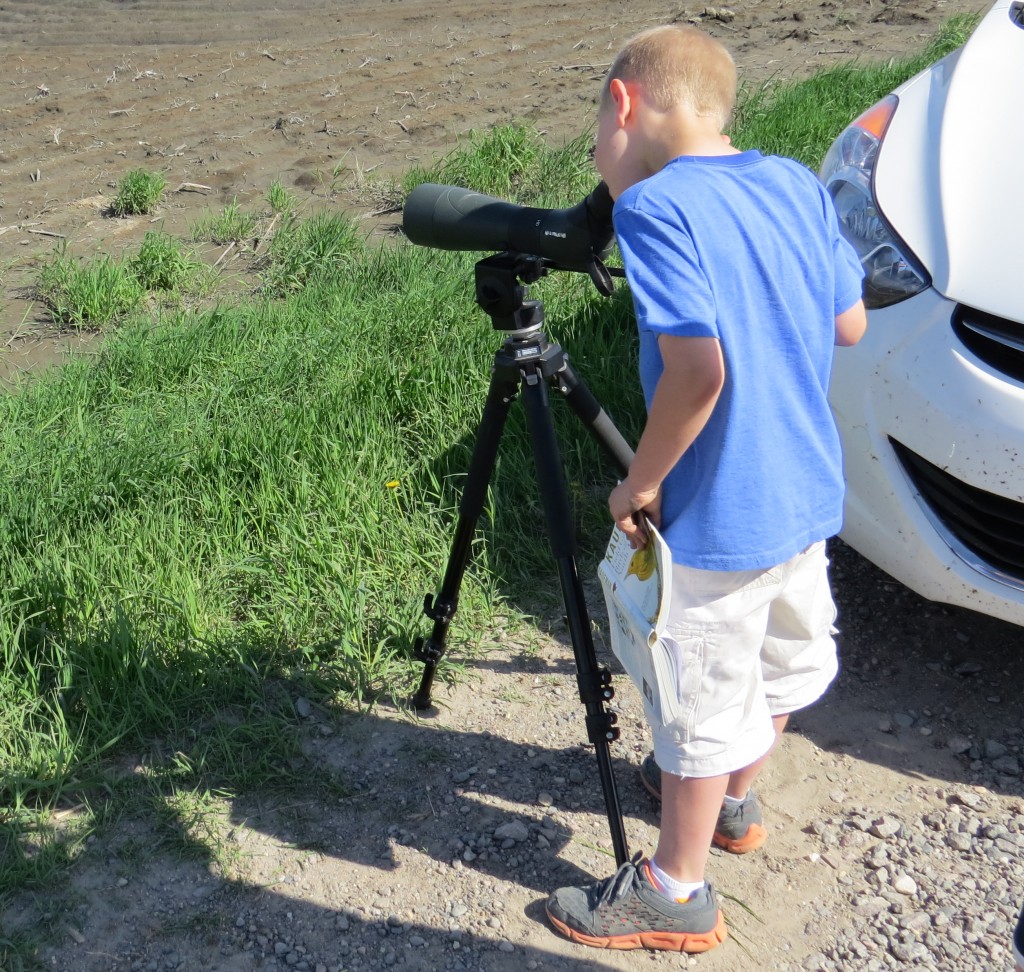 Two days and five life birds for Evan and four for me with some great sightings of some other really good shorebirds as well. This was quite unexpected. Migration has been screwy this year. Normally we wouldn’t be chasing shorebirds after warblers. Now, though, it’s open season on these guys again. And I’m learning that shorebirds are still arriving in states to the south of us. Tomorrow is my first full day of summer vacation, so Marin and I will be hitting the few local shorebird spots to keep up on the action. There will be no rest for the weary.
Two days and five life birds for Evan and four for me with some great sightings of some other really good shorebirds as well. This was quite unexpected. Migration has been screwy this year. Normally we wouldn’t be chasing shorebirds after warblers. Now, though, it’s open season on these guys again. And I’m learning that shorebirds are still arriving in states to the south of us. Tomorrow is my first full day of summer vacation, so Marin and I will be hitting the few local shorebird spots to keep up on the action. There will be no rest for the weary.
Shorebird Surprise
So it seems I wrote that previous blog post a tad prematurely. Yesterday I was fully living my life like migration was over – I slept in, scrubbed the deck, cleaned out two cars, and was gearing up to take the kids fishing in the afternoon. I was in full-on get ready for summer mode. Then I got a midday email from Randy who had checked out Carlson’s Dairy, an annually flooded field near a local dairy farm that is the go-to spot for shorebirds in our county. Randy said the place was hopping with about 90 peeps, 10 phalaropes, and 10 Stilt Sandpipers. A Wilson’s Phalarope would have been a life bird for Evan and a county bird for me, and the Stilt would have been new for both of us.
Though Evan had been asking repeatedly all morning when we were going fishing, I asked him if he wanted to make a quick run out to Carlson’s first. When he heard about those phalaropes, he was in. It was quite a sore spot for him last year when I got to see them without him.
We got out there and found the place full of tiny shorebirds.
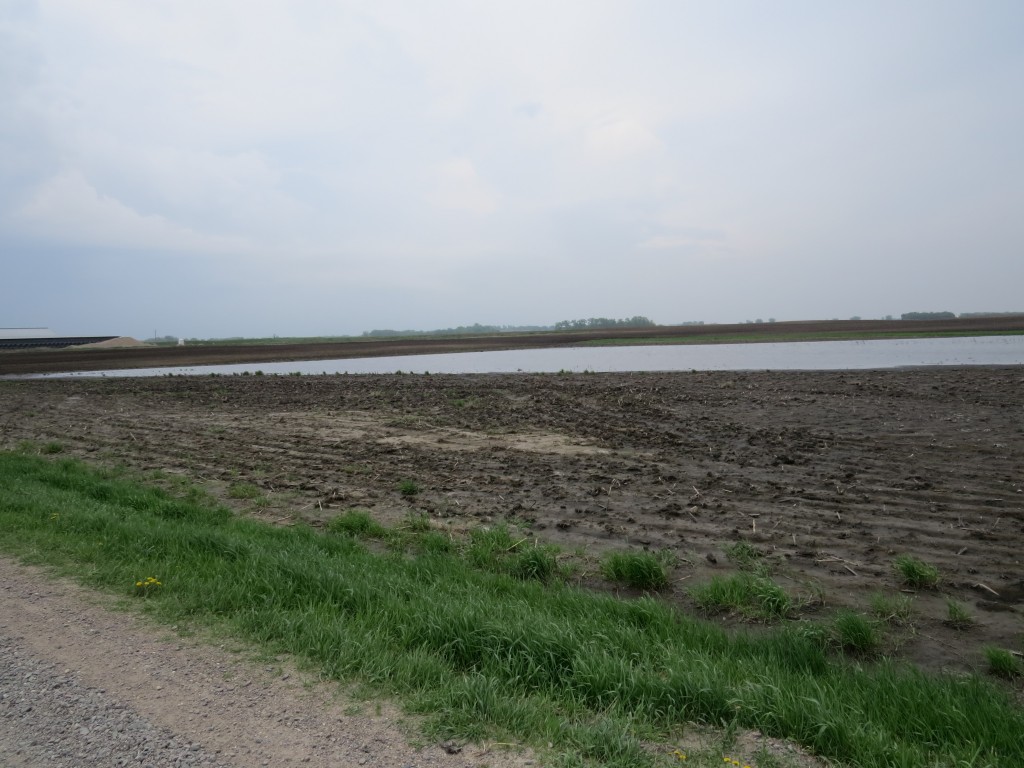 All I could see were the peeps who are no bigger than sparrows. There were tons of them. It took my awhile but I finally located a phalarope. I certainly didn’t see 10. I zoomed in on it and showed it to Evan on the LCD. He was excited to get his Wilson’s Phalarope but then wanted to go right away. Birding doesn’t really compare to fishing to a 7-year-old. So I snapped a picture of this phalarope, just assuming it was a Wilson’s, the most likely species. Then I looked a little closer at the LCD and realized it was a male Red-necked Phalarope in breeding plumage! This was not a life bird as we saw a very drab version last August at the Atwater sewage ponds.
All I could see were the peeps who are no bigger than sparrows. There were tons of them. It took my awhile but I finally located a phalarope. I certainly didn’t see 10. I zoomed in on it and showed it to Evan on the LCD. He was excited to get his Wilson’s Phalarope but then wanted to go right away. Birding doesn’t really compare to fishing to a 7-year-old. So I snapped a picture of this phalarope, just assuming it was a Wilson’s, the most likely species. Then I looked a little closer at the LCD and realized it was a male Red-necked Phalarope in breeding plumage! This was not a life bird as we saw a very drab version last August at the Atwater sewage ponds.
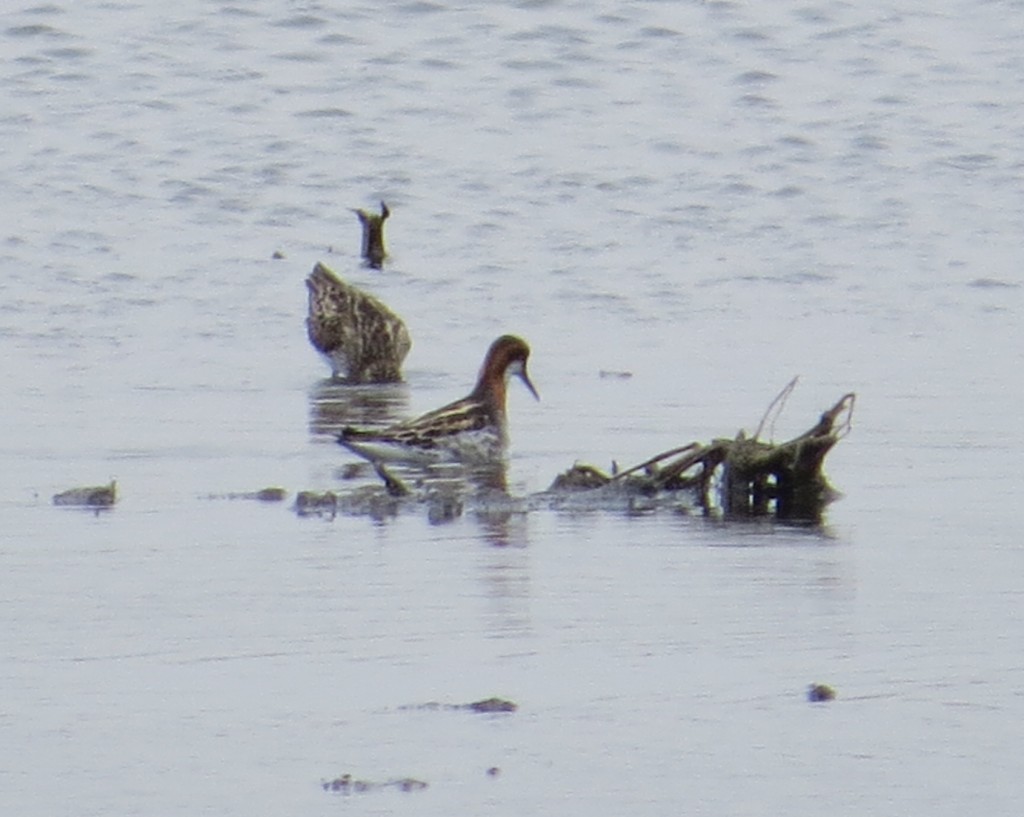
Male Red-necked Phalarope in breeding plumage
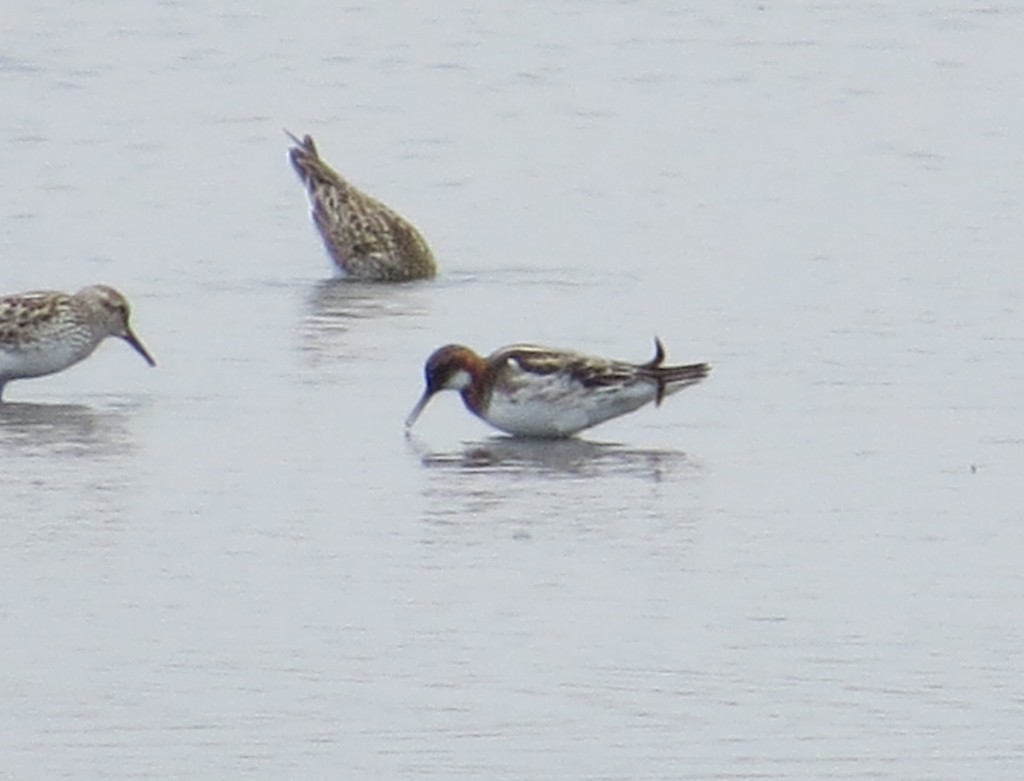 Now we had to stay for a bit because we hadn’t even gotten one of the two potential lifers there. I walked on the road to the view the north end of this pond, and I finally found the cache of phalaropes. These were definitely Wilson’s, so Evan got his life bird after all.
Now we had to stay for a bit because we hadn’t even gotten one of the two potential lifers there. I walked on the road to the view the north end of this pond, and I finally found the cache of phalaropes. These were definitely Wilson’s, so Evan got his life bird after all.
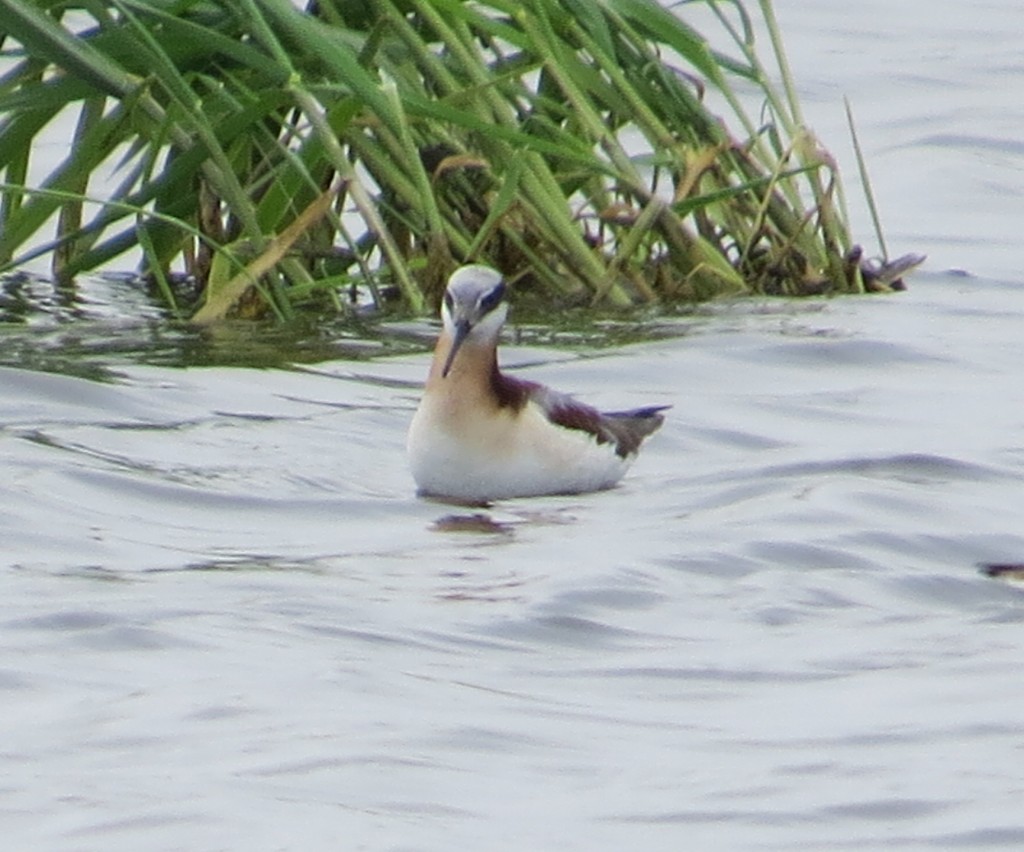
Wilson’s Phalarope
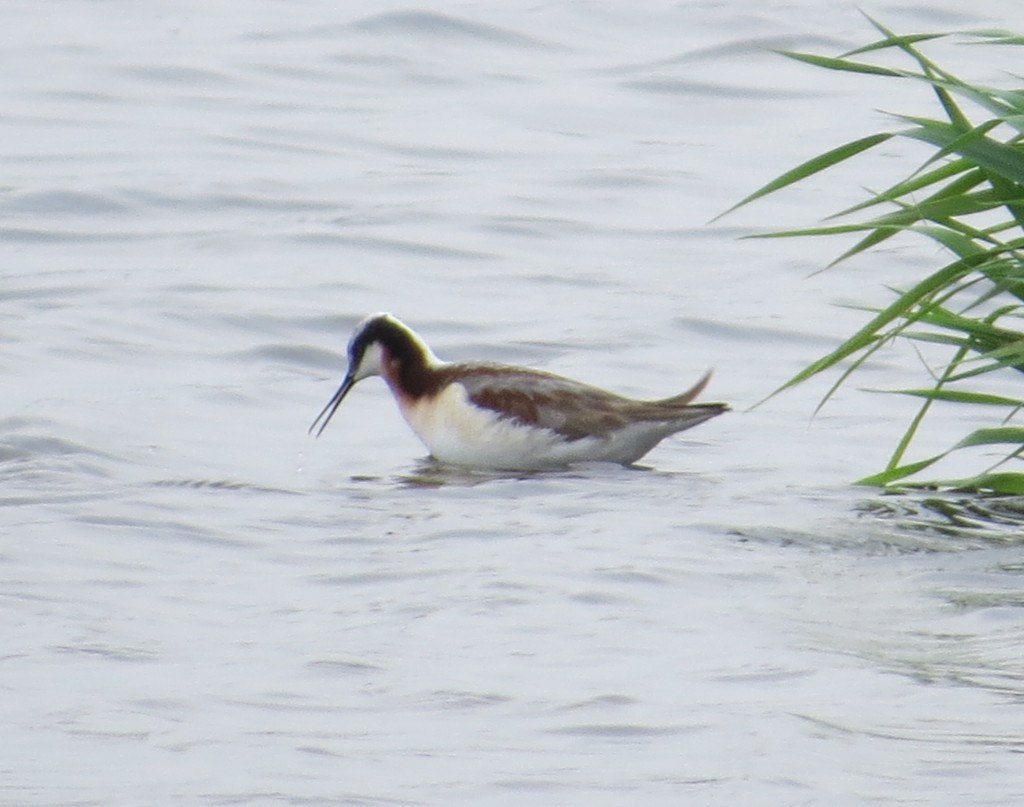 Then I spied some chunkier looking shorebirds that were bigger than the peeps but stockier than the phalaropes. The cloudy skies, distance, and strong wind buffetting my camera lens made it difficult to tell what they were. Were these our Stilt Sandpipers or a dowitcher of some sort? After looking back at my photos I could clearly see they were our Stilt lifers. It was interesting to read in the field guide, though, that they are compared to dowitchers in their behavior.
Then I spied some chunkier looking shorebirds that were bigger than the peeps but stockier than the phalaropes. The cloudy skies, distance, and strong wind buffetting my camera lens made it difficult to tell what they were. Were these our Stilt Sandpipers or a dowitcher of some sort? After looking back at my photos I could clearly see they were our Stilt lifers. It was interesting to read in the field guide, though, that they are compared to dowitchers in their behavior.
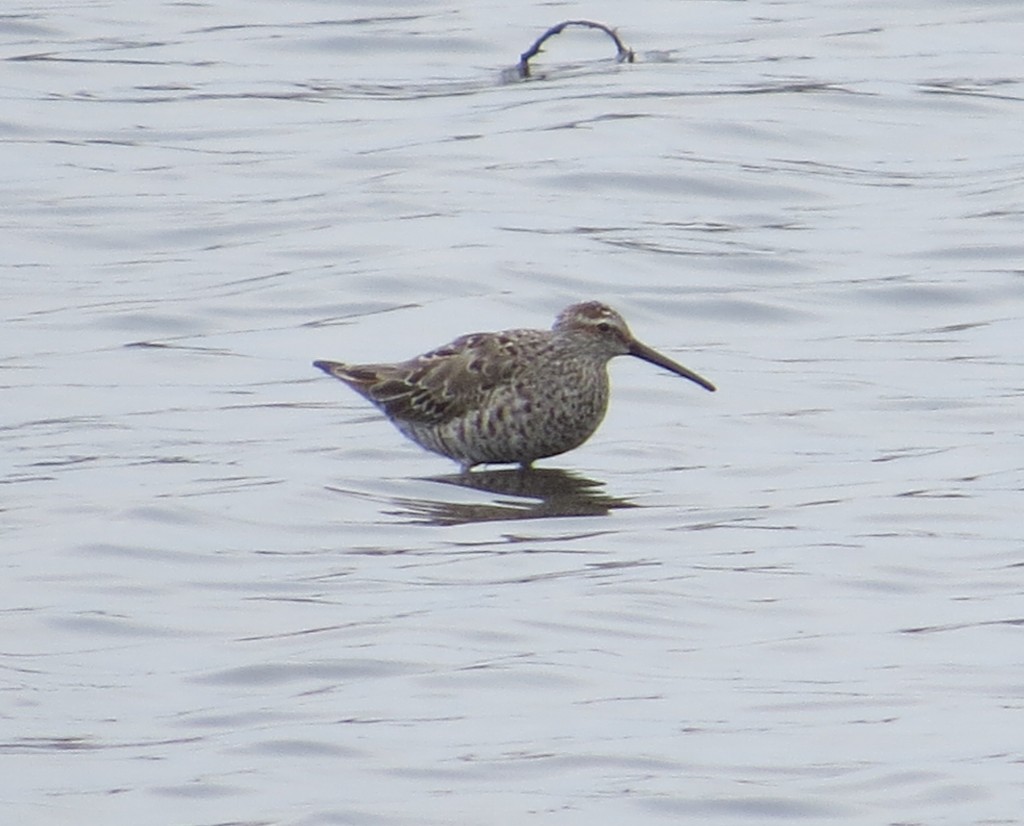
Stilt Sandpiper
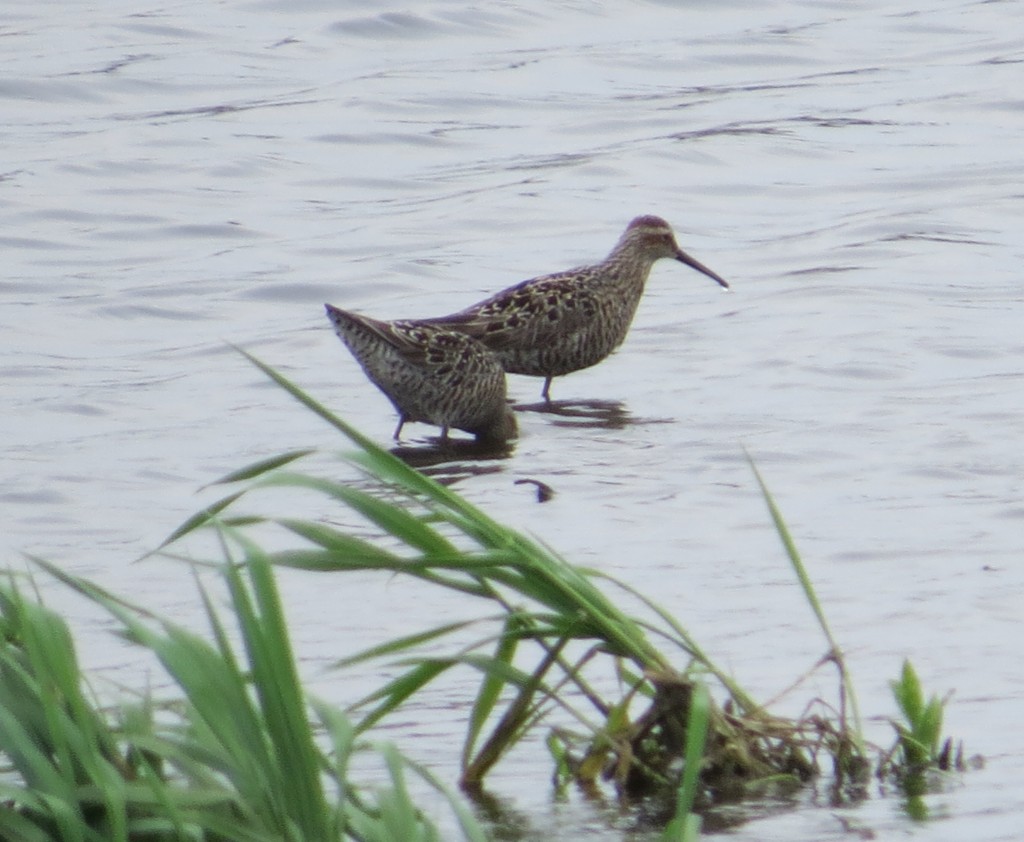
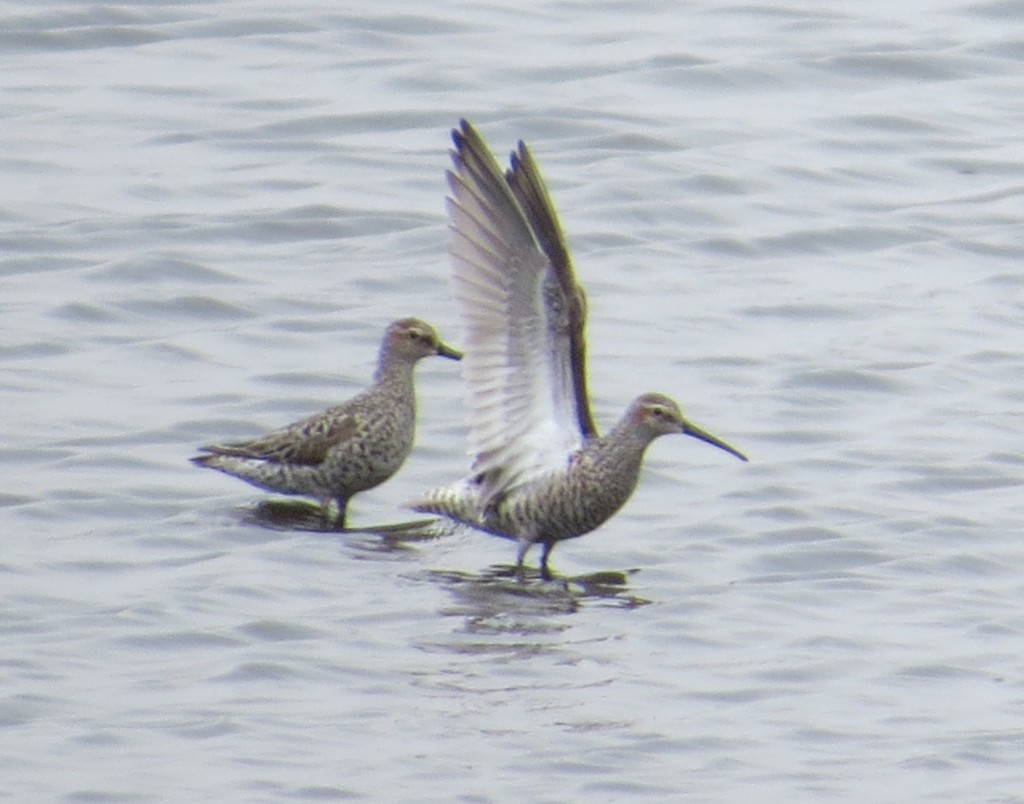
“I’m not a dowitcher! Don’t shoot!”
It turns out that there was one more little surprise for us mixed in with the chunkier shorebirds – a couple of Dunlin! This was a life bird for both of us. This is also my kind of shorebird as there is no doubt about the identification with the black bellies and chestnut-colored backs. Awesome.
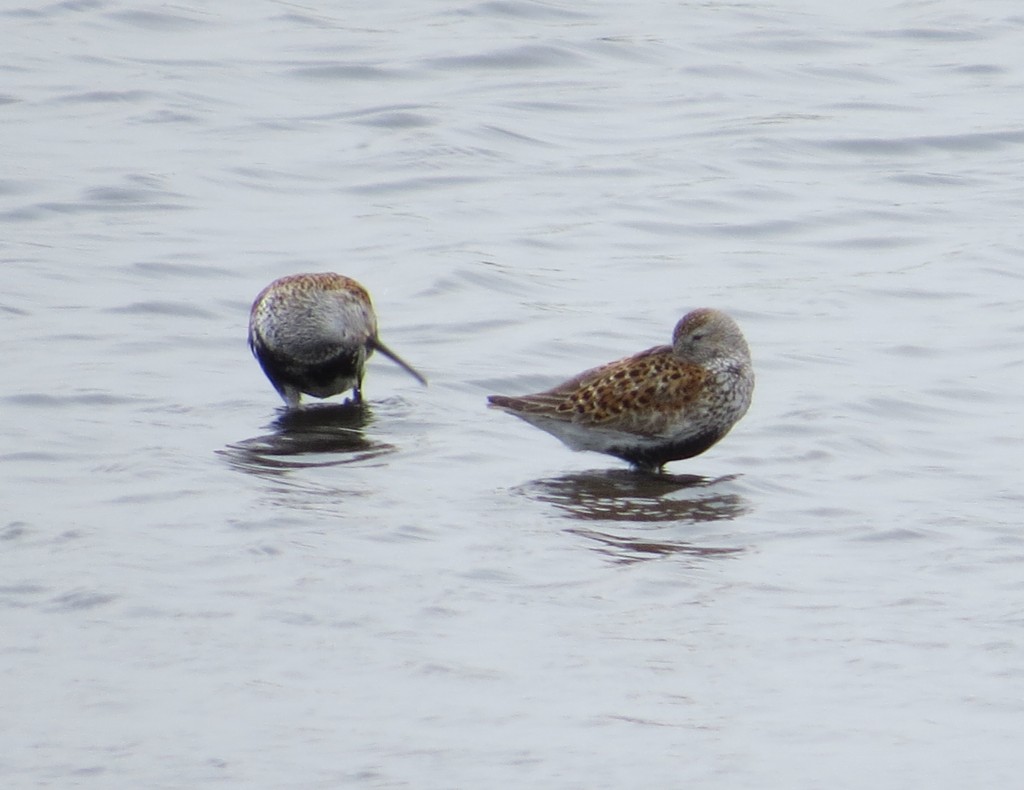
Dunlin
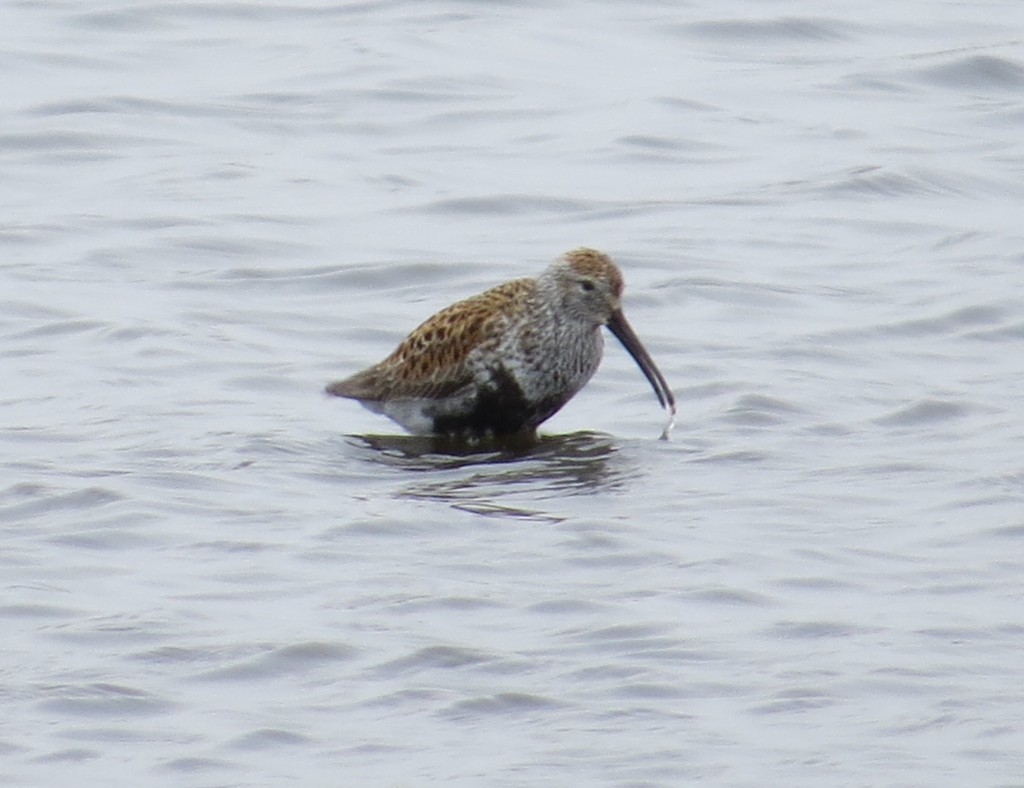 Three life birds for Evan, two for me, and a breeding plumage Red-necked Phalarope. I guess we better stay alert for a few more late migrants. As for the fishing report, Evan caught four Bluegill and quenched, albeit briefly, his thirst for fishing.
Three life birds for Evan, two for me, and a breeding plumage Red-necked Phalarope. I guess we better stay alert for a few more late migrants. As for the fishing report, Evan caught four Bluegill and quenched, albeit briefly, his thirst for fishing.
Later that evening we started working on our summer list of bird targets by going out with Randy. We were after anything marshy – Least Bitterns, American Bitterns, Soras, and Virginia Rails. We ended up hearing Soras and Virginia Rails which was pretty neat, but we did not see any. As Randy said, they are the kind of birds that you just have to get lucky with and bump into someday in order to get a good look. In the meantime we shall keep up the hunt for our targets and stay vigilant for any more late surprises.
Feelin’ Red Eyed
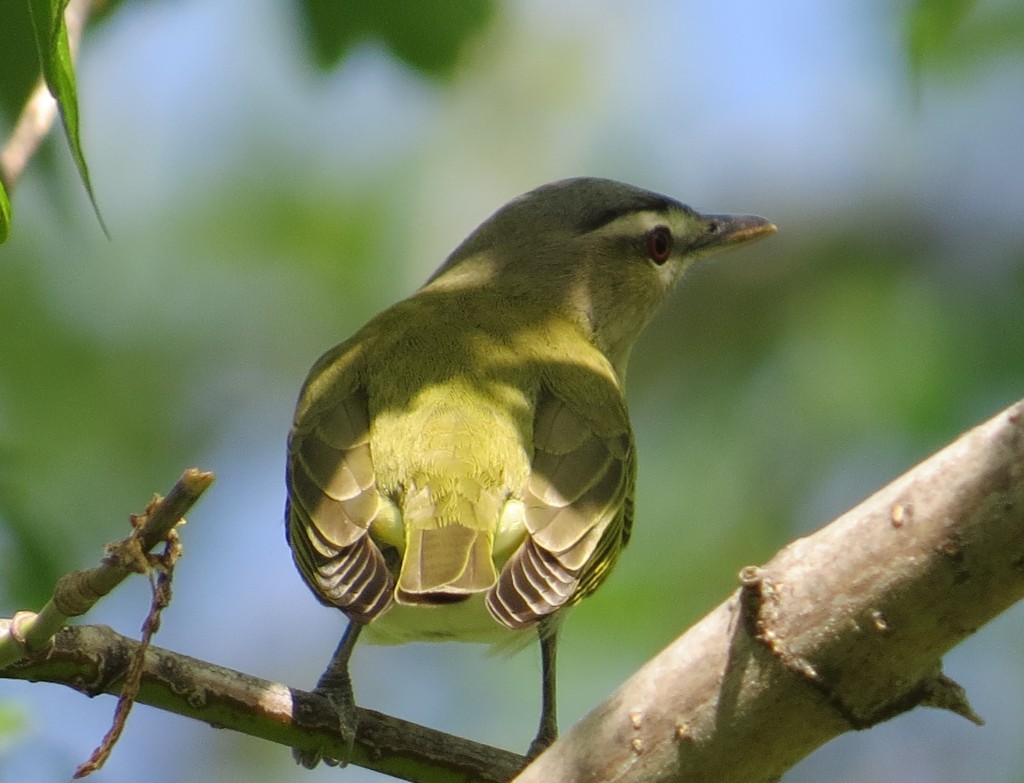
Red-eyed Vireo – probably one of our last migrants
It’s over. It really is. The long parade of migrants and the Easter-egg hunt for rarities is done. Also finished are the nights of a couple hours sleep from waking insanely early to hunt for good birds to staying up way too late to blog and eBird those good birds. In between waking and sleeping are way too many moments of checking for any new information on new arrivals, and sometimes this is done during the sleeping hours when I wake up in the middle of the night (several birders post to the listserv around 1 AM because the day’s birding was so good). We birders are as bad as stock traders watching the capricious whims of something for which we have no control, experiencing similar feelings of euphoria when something good pops up and feelings of depression when something goes away as quickly as it came. This constant flux of emotions can wreck havoc on an already exhausted body, but somehow we keep going out, keep searching for one more avian treasure.
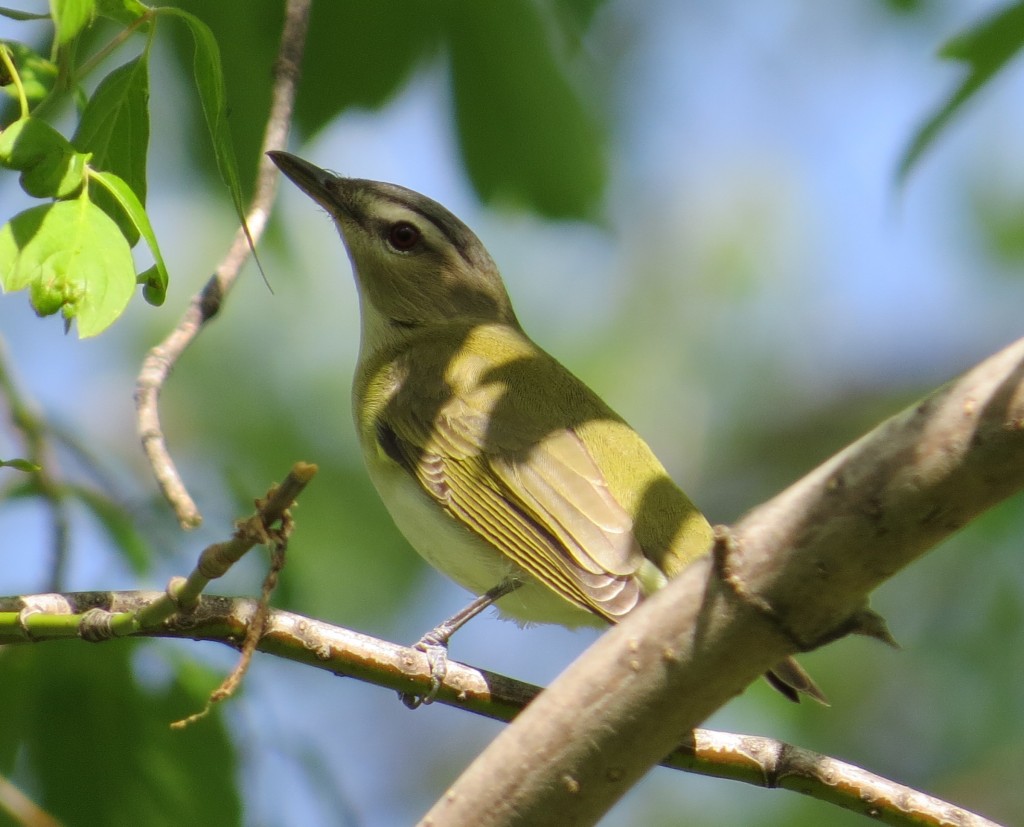
Ironically, the conclusion of migration coincides with the end of my teaching year when I now actually have time to go after birds and be well rested. All the chaos of migration also happens when life seems to be at the pinnacle of craziness with kid events, friend events, and just life in general. This massive amount of birding has to be squeezed in around the bigger and more important things going on.
Since Evan and I have seen most everything we can around here, I often go out by myself during migration and come back to grab him when I find something good. Surprisingly that happened a lot this spring, and way more life birds were added to the list for both of us than I ever anticipated. I had intended to spend time with a few favorite birds and photograph ones I’ve missed previously, but I was constantly interuppted with rarities that I found or chased. Maybe next year I’ll get to spend more time absorbed in the observation and photography of a particular species, something birding guide Erik Bruhnke refers to as zen-birding.
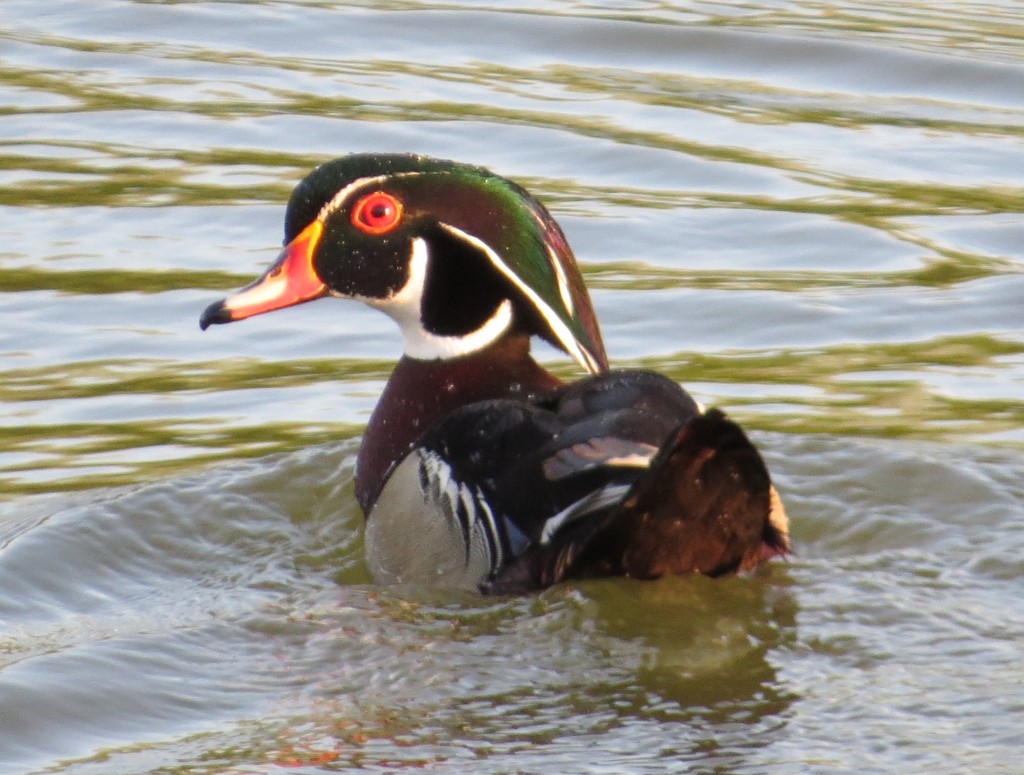
Wood Duck
Right now we are transitioning into “hunting” mode. There are a handful of resident birds that we have yet to see, either because of their scarcity, remarkable camouflage ability, or both. We will be working on the list in the coming weeks. The good news is that the birds will stay put; we just have to find out where they are and then get a good look at them.
It is also the time to catch up on photos of common birds. With fewer and fewer migrating birds to distract from these wallflowers, they can finally get their moment of glory.
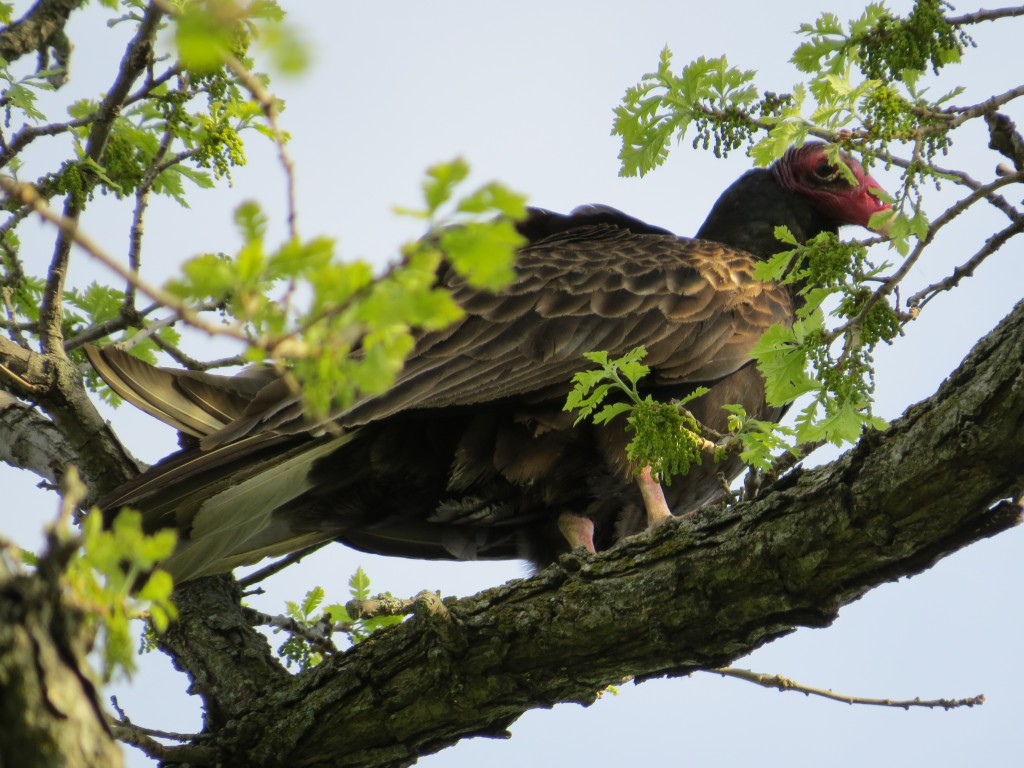
Turkey Vulture
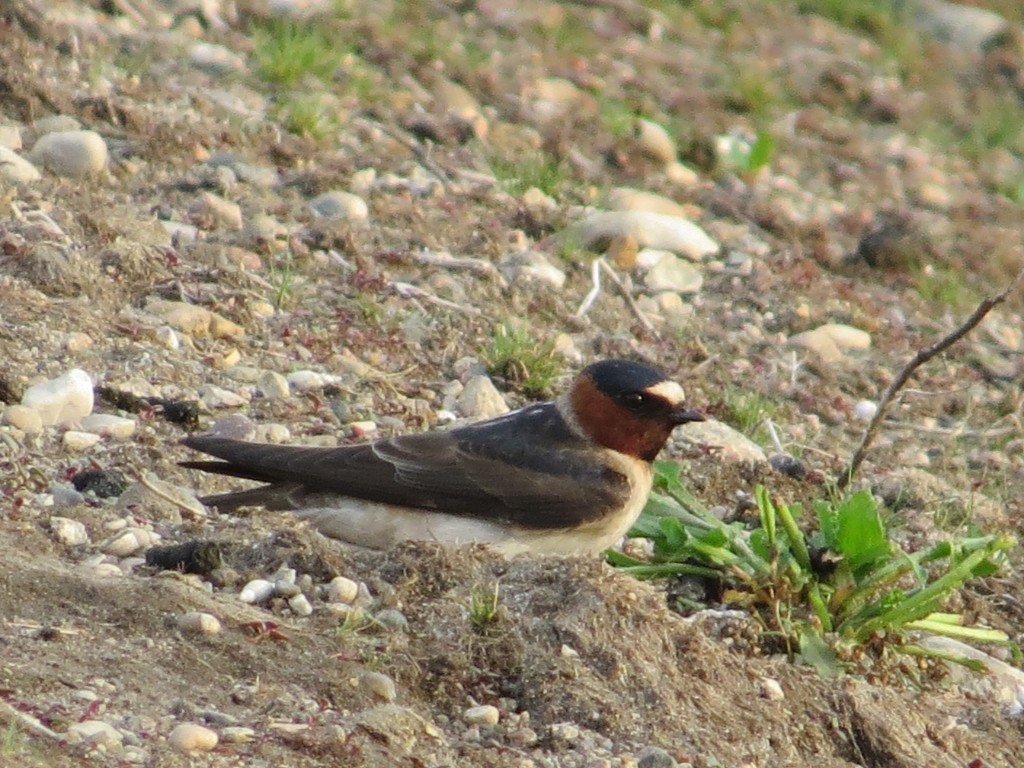
Cliff Swallow
And maybe, just maybe, I will finally take pictures of things like American Robins and Mourning Doves. I’ve been putting it off long enough, but it might be time to fill those holes. I promise I won’t bore you with those images this summer. Stay tuned, though, because there are some exciting summer birding forays planned with quite possibly a trip out-of-state.
Kingbird Highway or umm, County Road
If you think this post is a review of Kenn Kaufman’s book Kingbird Highway:The Biggest Year in the Life of an Extreme Birder, then you will be disappointed. Well, not really disappointed because this post still has some darn good birding it. Maybe some day I’ll find the time to read Kaufman’s book and do that review, but for now this little kingbird anecdote will have to do.
Tonight I went out on a solo birding mission. It was a gorgeous evening as we hit a daytime high of 79° with no wind and clear skies. That rarely happens here. Just last week Evan has his track and field day at school and the kiddos were wearing hats, gloves, and winter coats. Anyway, I had to get out tonight. Both kids declined my offer to go for a ride to scout out a new place to look for warblers.
About ten minutes from the house I turned east onto a gravel road to head to my destination on the south end of Lake Elizabeth. I have this terrible habit of focusing on my destination that I don’t take the time to adequately check out the birds on the way other than while traveling 60 MPH. It’s a good thing, though, that I was traveling slow on the gravel and heading east because the setting sun caught the brilliant yellow belly of a large bird as it lifted off the nearby telephone wire. I instantly knew it was the Western Kingbird! I tried for this bird unsuccessfully a couple different times last year and couldn’t turn one up at Blue Mounds State Park, Felton Prairie, or even Arizona. I had even been making plans to go to Cottonwood this summer to look for it again, and here it was in my own backyard!
I made the ID as I went past it. Looking back I was staring at its sillhouette in the setting sun. I also had a truck come behind me and scare it up. Thankfully it landed back on the wire. I wasn’t taking any chances on scaring it without seeing it in the good light and getting a recognizable photo, so I continued east and drove around the square mile section so I could pull up on it with good light at my back.
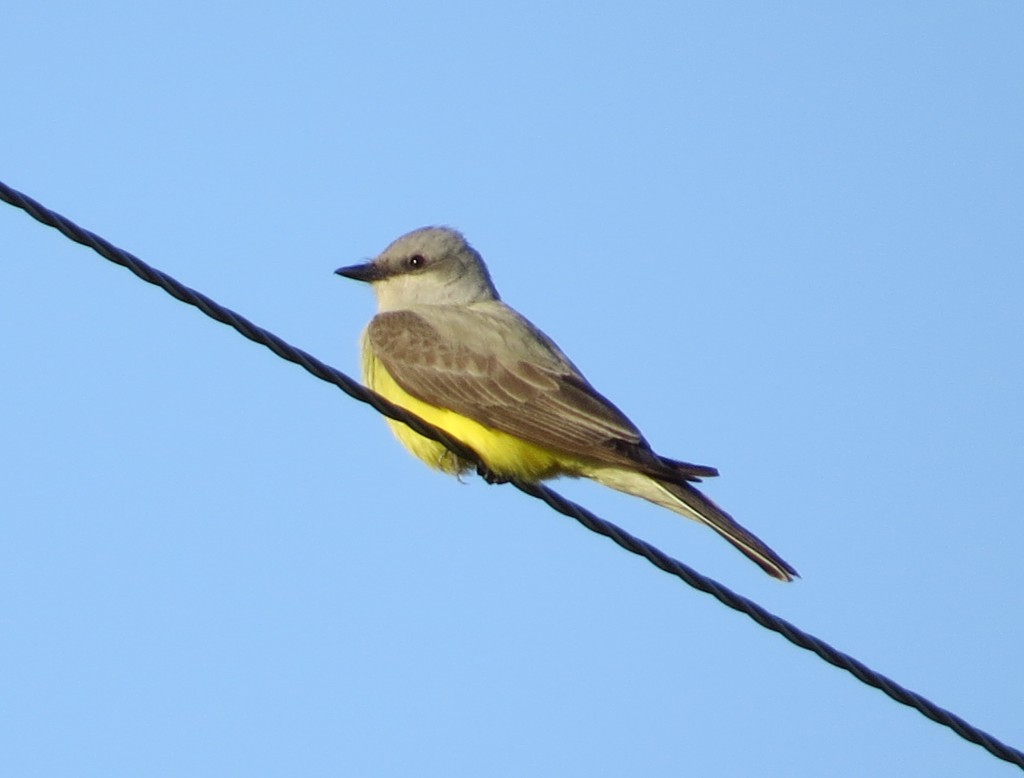
Western Kingbird
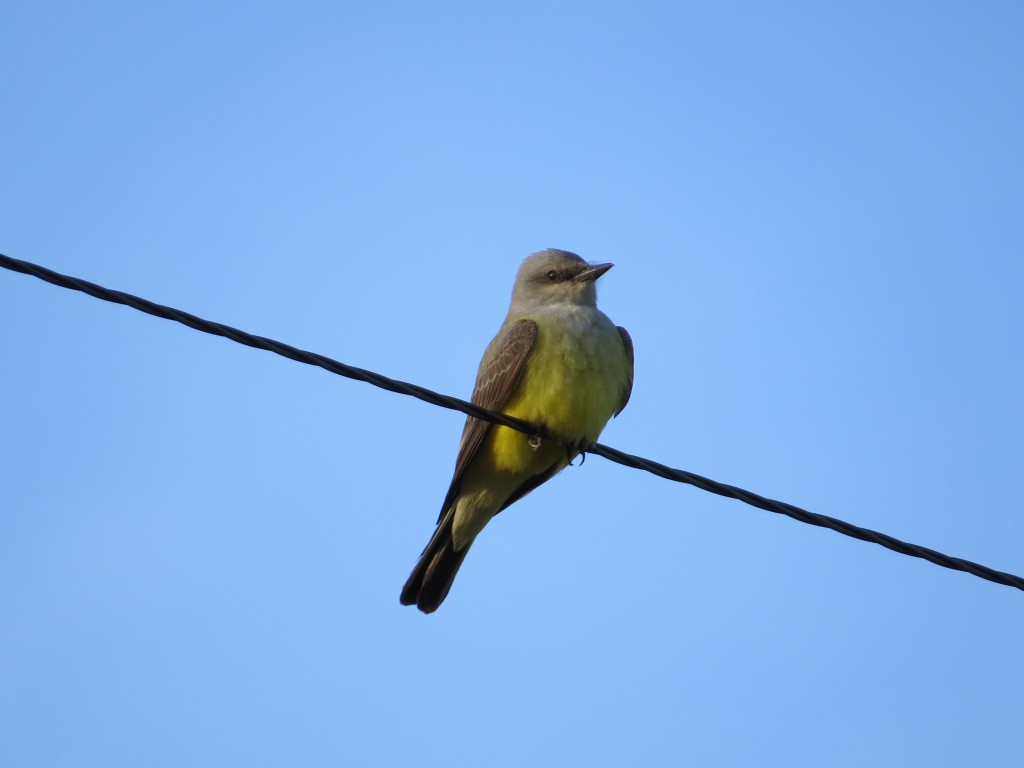 I raced home to get Evan. It was only 7:20, so I still had time to get him, get the bird, and get him back for bed at 8. I whipped into the neighborhood and saw all the neighbors and neighbor kids were outside hanging out enjoying this gorgeous night. When they saw me pull up curb-side and not bother to pull in the driveway, they all knew I had seen something good and was there to pick up Evan. No time for small talk. I told Evan to hop in because I found us the Western Kingbird. In seconds, we tore off going back to the wire.
I raced home to get Evan. It was only 7:20, so I still had time to get him, get the bird, and get him back for bed at 8. I whipped into the neighborhood and saw all the neighbors and neighbor kids were outside hanging out enjoying this gorgeous night. When they saw me pull up curb-side and not bother to pull in the driveway, they all knew I had seen something good and was there to pick up Evan. No time for small talk. I told Evan to hop in because I found us the Western Kingbird. In seconds, we tore off going back to the wire.
When we got there, I saw a bird on the wire and was hopeful. Then my hopes sank for Evan when I saw it was a Mourning Dove. But I glassed the wire a little further down and refound the kingbird between the next two poles. Whew. Evan has trouble operating binoculars, so I crept the car right up to this bird giving us some incredible looks.
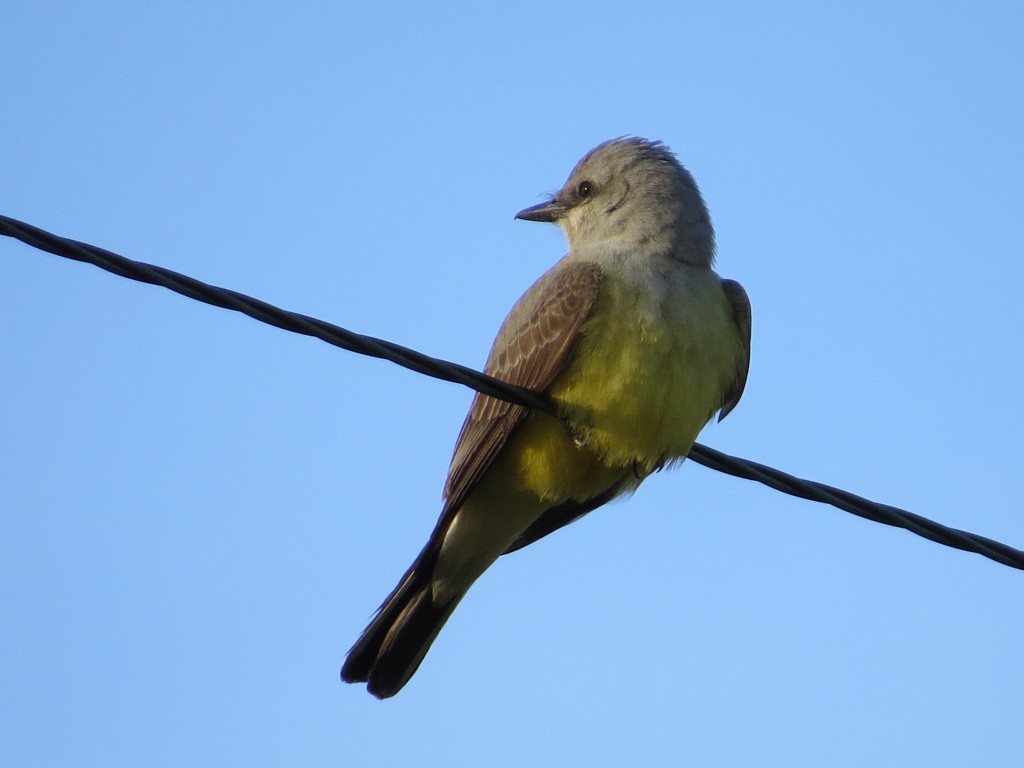
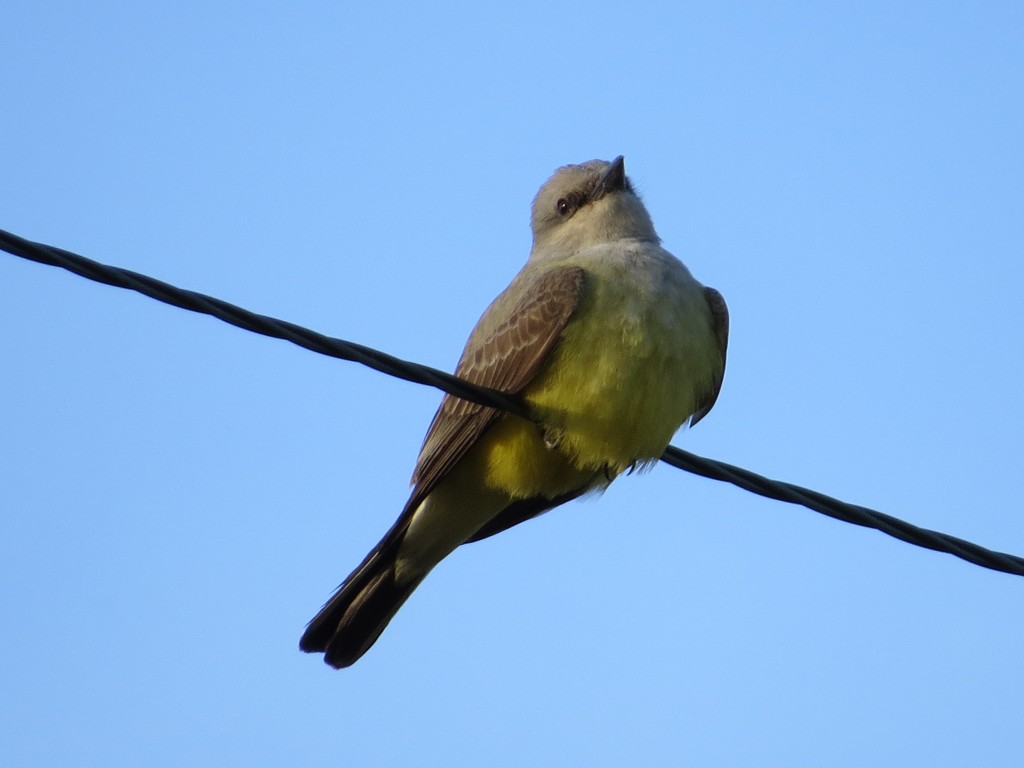
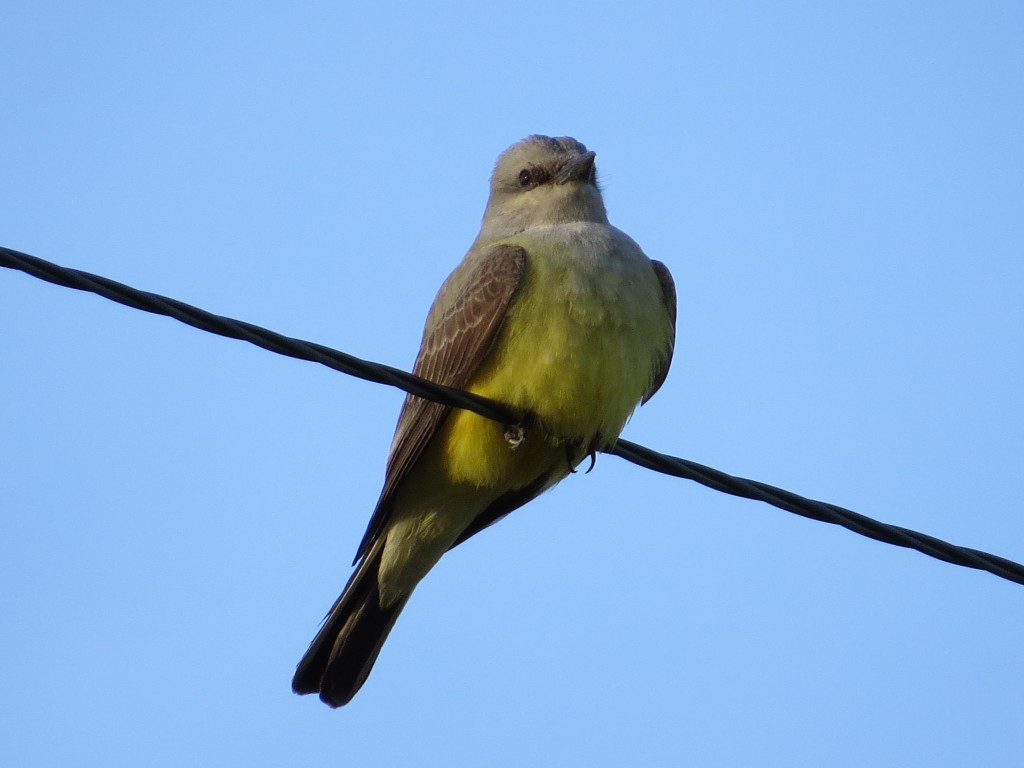
Even being so close, it was tough to fully see how cool this bird was. I flipped open my LCD display for Evan to get a real good look. His response was, “Cool!” Yes, it was. Sadly this bird finally left us going long out of sight. I was hoping it would stick around for other area birders. After all, Western Kingbirds are quite scarce here. Joel told me he’s only seen them twice in the county before.
The funny thing about this Western Kingbird is that he was sitting on a wire on the west end of this gravel road. On the east end were five Eastern Kingbirds! How appropriate. It reminded me of a blog post by the Two-Fisted Birdwatcher. Strangely, I’ve never spent much time photographing this locally common bird, and they were quite skittish tonight when I tried.
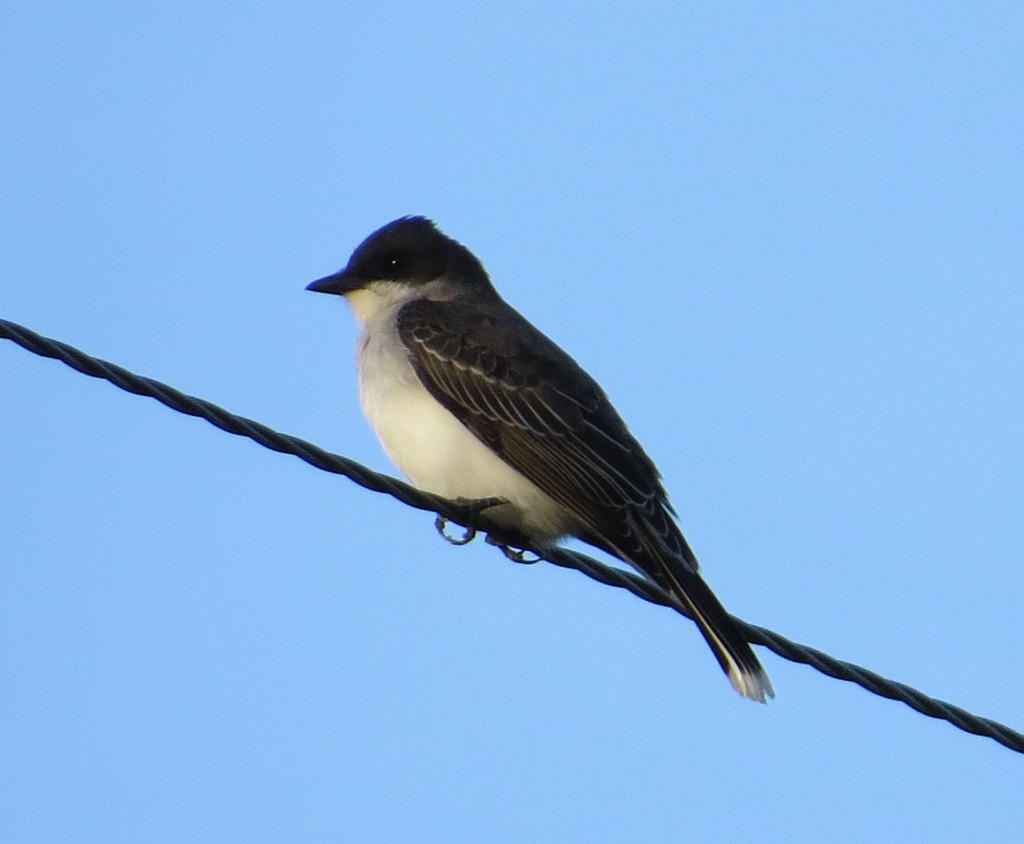
Eastern Kingbird
It was a very cool burst of birding on this school night. We did a little wandering on the way home and stopped to look at birds here and there. Evan didn’t let me dawdle too long as he had a date with a root beer float back home. Our wandering back brought us down a gravel road that winds between two lakes – water on the left, water on the right. We’ve traveled it many times. Where the water flows through a culvert under the road there are always American White Pelicans feeding on the fish that move between the lakes. Before we got there Evan said he would bet me $10 that there would be pelicans. I told him there was no way I was taking his bet.
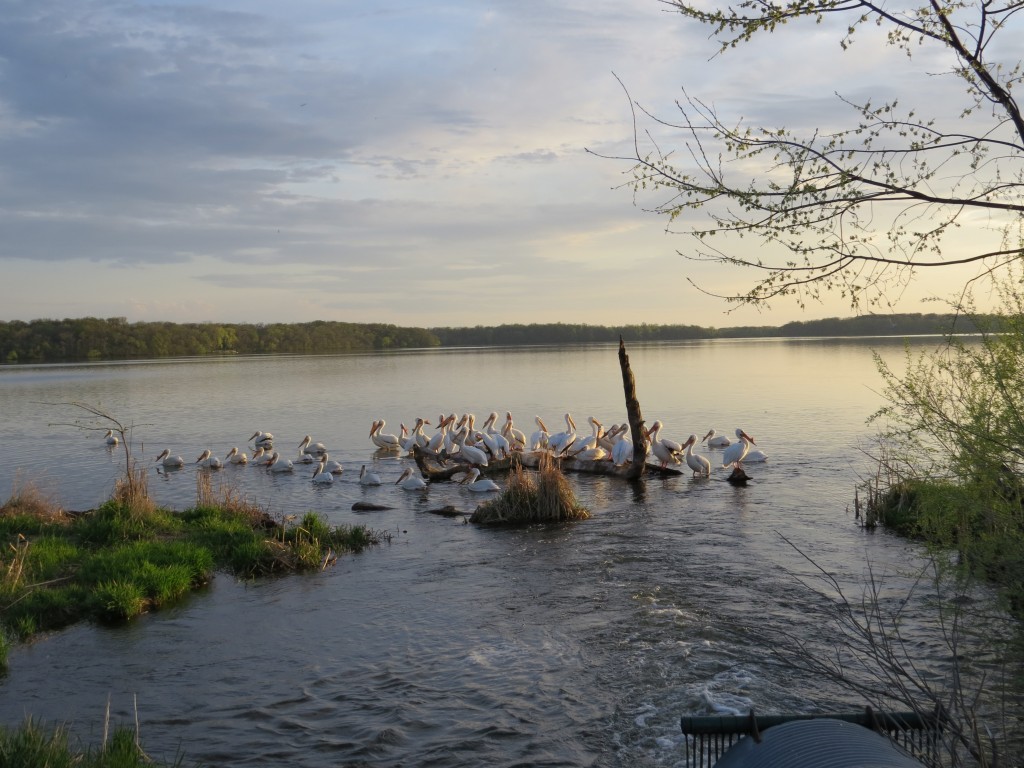
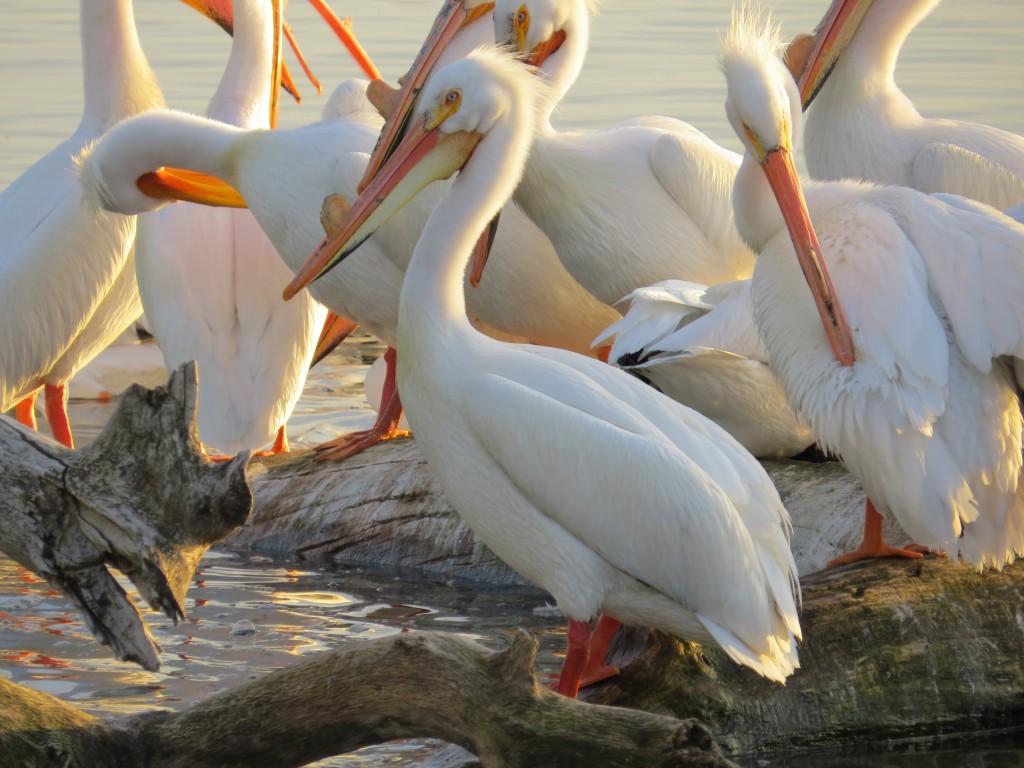
Evan would have to settle for his root-beer float instead. I didn’t care about a root-beer float anymore as I was already content with a great sighting of a life bird that was near the top of the summer wish list. But I still enjoyed that float.
